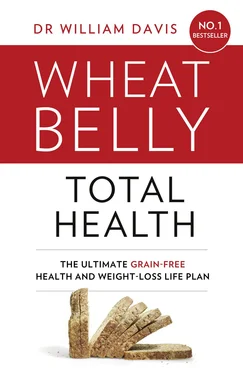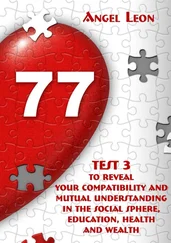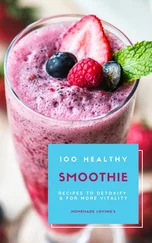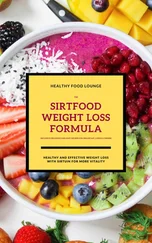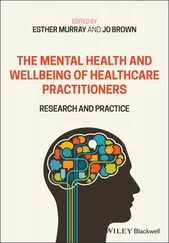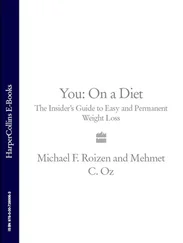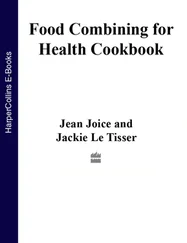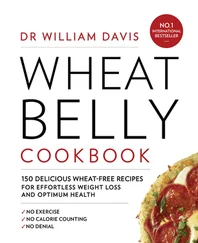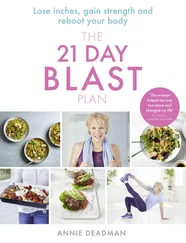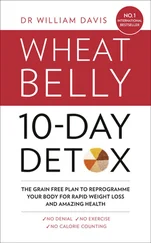In Part II, we deal with just how to accomplish this journey, including how you can survive the process of withdrawal from the opiates in grains – probably the most challenging hurdle to overcome in your journey back to health and the one that, if you are not properly coached and equipped, can backfire and set you back to your former grain-consuming ways. I teach you how to know when you’ve been reexposed to closely related proteins that force your body to revisit the havoc you thought you’d eliminated and threaten to undo everything you’ve accomplished. I also discuss how your body adapts to this new situation in life without grains, and why and how adaptation may not be complete until you take the reins and make it complete.
In Part III, I discuss how to pursue health as far as possible once you have removed all the health destruction of grains: how to achieve new heights of energy, sleep, mental clarity, mood, bowel function, endocrine health, metabolic health, exercise and physical functioning. We’ll apply all of the lessons we’ve learned along the way as we discover that, minus grains, life and health are actually quite wonderful.
Too many of us, forced to accept this mantra of ‘healthy whole grains’, have never been shown the path to easily and effortlessly accomplish total health. Once the health disruptions of grains are exorcised from your life and you recognize their purported health benefits for the fictional notions they are, everything gets so much better. Without grains, wondrous things begin to happen in just about every way. That is what ‘total health’ means.
Contents Cover Title Page Copyright Dedication To all the readers who have the boldness, courage and conviction to rebel against conventional dietary advice and discover what real nutrition can do for human health Introduction Part I: No Grain is a Good Grain: Grazed, Grass-Fed and Fattened Chapter 1 Liberate Your Inner Cow: Life Ungrained Chapter 2 Let Them Eat Grass Chapter 3 The Reign of Grain Chapter 4 Your Bowels Have Been Fouled: Intestinal Indignities from Grains Chapter 5 Grains, Brains and Chest Pains Part II: Living Grainlessly: Restoring the Natural State of Human Life Chapter 6 Grainless Life: Beginnings Chapter 7 Grainless Living Day-to-Day Part III: Be a Grainless Overachiever: The Next Steps to Reclaiming Grain-Free Total Health Chapter 8 Correct Nutritional Deficiencies Caused by Grains Chapter 9 Full Recovery from Post-Traumatic Grain Gut Syndrome Chapter 10 Grainless Metabolic Mastery: Regain Control over Blood Sugar, Cholesterol, Bone Health and Inflammation Chapter 11 The Annoyed Thyroid: Booby Trap for Weight and Health Chapter 12 Endocrine Disruption: Trouble in the Gland Scheme of Things Chapter 13 End the Self-Defeat: Recovering from Autoimmunity Chapter 14 What If the Weight Doesn’t Come Off? Chapter 15 Clearer, Smarter, Faster: Grain-Free Performance Epilogue Appendix A Recipes for Total Health Appendix B Grain Pain: Watch Out for Hidden Sources of Grains Appendix C A Grain-Free Shopping List Appendix D Resources Endnotes List of Searchable Terms Acknowledgements Other Books by William Davis About the Publisher
Chapter 1 Chapter 1 Liberate Your Inner Cow: Life Ungrained Chapter 2 Let Them Eat Grass Chapter 3 The Reign of Grain Chapter 4 Your Bowels Have Been Fouled: Intestinal Indignities from Grains Chapter 5 Grains, Brains and Chest Pains Part II: Living Grainlessly: Restoring the Natural State of Human Life Chapter 6 Grainless Life: Beginnings Chapter 7 Grainless Living Day-to-Day Part III: Be a Grainless Overachiever: The Next Steps to Reclaiming Grain-Free Total Health Chapter 8 Correct Nutritional Deficiencies Caused by Grains Chapter 9 Full Recovery from Post-Traumatic Grain Gut Syndrome Chapter 10 Grainless Metabolic Mastery: Regain Control over Blood Sugar, Cholesterol, Bone Health and Inflammation Chapter 11 The Annoyed Thyroid: Booby Trap for Weight and Health Chapter 12 Endocrine Disruption: Trouble in the Gland Scheme of Things Chapter 13 End the Self-Defeat: Recovering from Autoimmunity Chapter 14 What If the Weight Doesn’t Come Off? Chapter 15 Clearer, Smarter, Faster: Grain-Free Performance Epilogue Appendix A Recipes for Total Health Appendix B Grain Pain: Watch Out for Hidden Sources of Grains Appendix C A Grain-Free Shopping List Appendix D Resources Endnotes List of Searchable Terms Acknowledgements Other Books by William Davis About the Publisher
Liberate Your Inner Cow: Life Ungrained Chapter 1 Liberate Your Inner Cow: Life Ungrained Chapter 2 Let Them Eat Grass Chapter 3 The Reign of Grain Chapter 4 Your Bowels Have Been Fouled: Intestinal Indignities from Grains Chapter 5 Grains, Brains and Chest Pains Part II: Living Grainlessly: Restoring the Natural State of Human Life Chapter 6 Grainless Life: Beginnings Chapter 7 Grainless Living Day-to-Day Part III: Be a Grainless Overachiever: The Next Steps to Reclaiming Grain-Free Total Health Chapter 8 Correct Nutritional Deficiencies Caused by Grains Chapter 9 Full Recovery from Post-Traumatic Grain Gut Syndrome Chapter 10 Grainless Metabolic Mastery: Regain Control over Blood Sugar, Cholesterol, Bone Health and Inflammation Chapter 11 The Annoyed Thyroid: Booby Trap for Weight and Health Chapter 12 Endocrine Disruption: Trouble in the Gland Scheme of Things Chapter 13 End the Self-Defeat: Recovering from Autoimmunity Chapter 14 What If the Weight Doesn’t Come Off? Chapter 15 Clearer, Smarter, Faster: Grain-Free Performance Epilogue Appendix A Recipes for Total Health Appendix B Grain Pain: Watch Out for Hidden Sources of Grains Appendix C A Grain-Free Shopping List Appendix D Resources Endnotes List of Searchable Terms Acknowledgements Other Books by William Davis About the Publisher
Goldfish do not eat sausages. John Cleese, ‘How to Feed a Goldfish’, Monty Python’s Flying Circus
Since you are reading this book, I take it that you are a member of the species Homo sapiens . You are probably not a giraffe, toad or woodpecker. Nor are you a ruminant, those taciturn creatures that graze on grass.
Ruminants, such as goats and cows, and their ancient, wild counterparts, ibex and aurochs, enjoy evolutionary adaptations that allow them to consume grasses. They have continuously growing teeth to compensate for the wear generated by coarse, sandlike phytolith particles in grass blades; cows produce in excess of 100 litres of saliva per day; have four-compartment stomachs that host unique microorganisms to digest grass components, including a compartment that grinds and then regurgitates its contents up as a cud to rechew; and a long, spiral colon that’s also host to microorganisms that further digest grassy remains. In other words, ruminants have a gastrointestinal system uniquely specialized to consume grasses.
You don’t look, smell or act like a ruminant. Then why would you eat like one?
Those of you who have already forgone wheat do not, of course. But if you remain of the ‘healthy whole grain’-consuming persuasion, you have fallen victim to believing that grasses should be your primary source of calories. Just as Kentucky bluegrass and ryegrass in your lawn are grasses from the biological family Poaceae, so are wheat, rye, barley, corn, rice, bulgur, sorghum, triticale, millet, teff and oats. You grow teeth twice in your life, then stop, leaving you to make do for a lifetime with a prepubertal set that erupted around the age of 10; produce a meagre litre of saliva per day; have three fewer stomach compartments unpopulated by foreign organisms and without grinding action; don’t chew a cud; and have a relatively uninteresting, linear, nonspiral colon. These adaptations allow you to be omnivorous – but not to consume grasses.
Early members of our species found nourishment through scavenging, and then hunting, animals such as gazelles, turtles, birds and fish, and consuming the edible parts of plants, including fruit and roots, as well as mushrooms, nuts and seeds. Hungry humans instinctively regarded all of these as food. About 10,000 years ago, during a period of increasing temperature and dryness in the Fertile Crescent, humans observed the ibex and aurochs grazing on einkorn, the ancient predecessor of modern wheat. Our hungry, omnivorous ancestors asked, ‘Can we eat that, too?’ They did, and surely got sick: vomiting, cramps and diarrhoea. At the very least they simply passed wheat plants out undigested, since humans lack the ruminant digestive apparatus. Grass plants in their intact form are unquestionably unappetizing. We somehow figured out that for humans, the only edible part of the einkorn plant was the seed – not the roots, not the stem, not the leaves, not the entire seed head – just the seed, and even that was only edible after the outer husk was removed and the seed was chewed or crushed with rocks and then heated in crude pottery over fire. Only then could we consume the seeds of this grass as porridge, a practice that served us well in times of desperation when ibex meat, bird eggs and figs were in short supply.
Читать дальше
